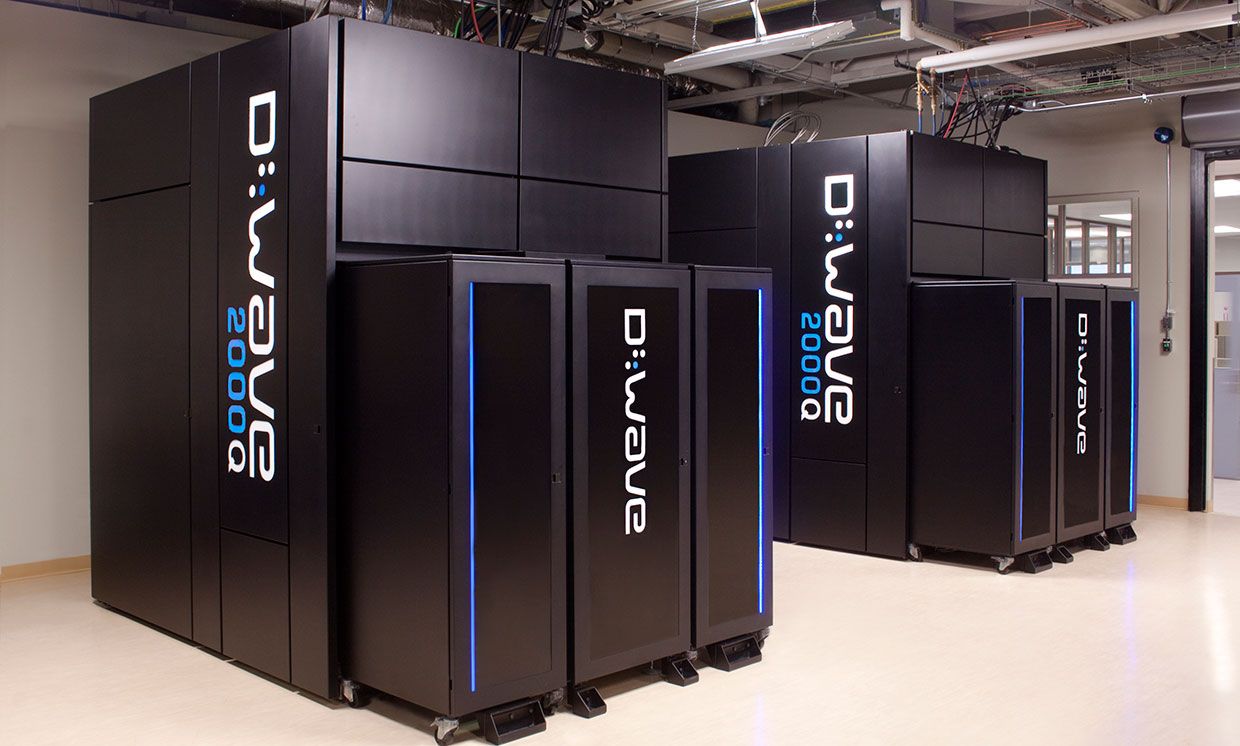D-Wave Systems has offered free cloud computing time on its quantum computer to COVID-19 researchers. The offer, unveiled last week, applies to work toward vaccines and therapies as well as epidemiology, supply distribution, hospital logistics, and diagnostics.
“We have opened up our service for free, unlimited use—for businesses, for governments, for researchers—working on solving problems associated with the pandemic,” said Alan Baratz, CEO of D-Wave, based in Burnaby, British Columbia. “We also recognize that many of these companies may not have experience with quantum computers. So we’ve also reached out to our customers and partners who do have experience with using our systems to ask if they would be willing to help.”
The free quantum computing consulting services D-Wave is arranging include quantum programming expertise in scientific computing as well as in planning, management, and operations for front-line workers.
Quantum computing, long a subject of theoretical speculation, has in recent years been solving practical, real-world problems. D-Wave, founded in 1999, styles itself the world’s first commercial quantum computer company. Its brand of computer is built around superconducting circuits (so-called SQUIDs, or superconducting quantum interference devices) that display macroscopically observable quantum properties.

D-Wave’s four systems, released between 2011 and 2017, range in size from 128 to 2,048 quantum bits (qubits). A fifth system, announced in September, will have 5,640 qubits and is, according to the company’s announcement, slated to be released later this year.
Since 2018, D-Wave has offered remote access to quantum computing via its “Leap” quantum cloud computing service. Baratz says an ecosystem of more than 1,000 developers has sprung up to apply Leap’s quantum computing resources to a variety of purposes, including protein folding and financial modeling, and optimizing public transportation routes in Lisbon, Portugal.
Then, in February, D-Wave began offering an enhanced quantum computing cloud service (Leap 2) which couples simulated qubits (on a conventional computer) with D-Wave’s actual qubits.
The original Leap quantum cloud could only support problems containing at most 100 variables. And those 100 variables could only be sparsely connected with one another. Leap 2, by contrast, can support problems with up to 10,000 variables—all of which can be fully connected with one another.
To illustrate the difference between “sparsely connected” variables and “fully connected” variables, Baratz describes a sample problem: An airline, say, has a fleet of 100 planes spread out over 25 airports, with 500 crew members who are either flying the plane or servicing the passengers or on the ground servicing the planes. The optimum set of schedules for those planes and staff members involves both the raw parameters above as well as real-world constraints on the planes (maintenance schedules, weather, and number of berths available at any given airport) and on the crew (home bases, certification levels on various aircrafts, work and vacation schedules). Those constraints would be programmed into a D-Wave algorithm as degrees and kinds of connectedness between the variables.
“The variable has to do with the size of the problem you can solve—how many planes, how many slots on planes, for example,” Baratz said. “And then the constraints on the variable are these parameters that need to be met as you do the assignments to the values of the variables.”
Masayuki Ohzeki is a co-founder of the Tokyo-based Sigma-i company. They have used D-Wave’s quantum cloud to develop optimum tsunami evacuation routes and to increase the efficiency of automated robotic carts moving materials around within a factory.
Now Ohzeki said his team has begun work on route planning for transporting large numbers of COVID-19 patients to and from a medical facility.
As with the airline example above, the factors determining each individual patient’s transportation—whether it’s due to the condition of the patient or the number of staff available on any given shift—can make the problem complex.
“In this sense, it is important to pay attention to the interaction and come up with a new formulation rather than following an existing textbook framework,” he said. “Sigma-i (likes to explore) how to use the quantum annealer more cleverly.”
Kristel Michielsen is a quantum information processing group leader at the Jülich Supercomputing Center in Germany. She’s part of a team of D-Wave programmers who have offered to provide free consultation to COVID-19 researchers. “The JSC offers its quantum annealing expertise, including the selection of suitable problems and the ‘translation’ of those problems into the language of quantum annealing,” she said.
In a followup email, gathering the first week’s worth of submissions from coronavirus researchers applying for D-Wave time, Baratz said the initial response to their offer has come from teams tackling a range of coronavirus-related problems.
“We’ve seen problems being explored in the following areas: 1) the modeling and simulation of the spread of the virus, 2) the scheduling of nurses and other hospital resources, 3) assessing the rate of virus mutation, and 4) the assessment of existing drugs as potential treatments,” Baratz said. “We’ve heard positive feedback from organizations and developers around the world and are looking forward to their collaboration with our global partners to find potential solutions to COVID-19.”
Source: Spectrum










